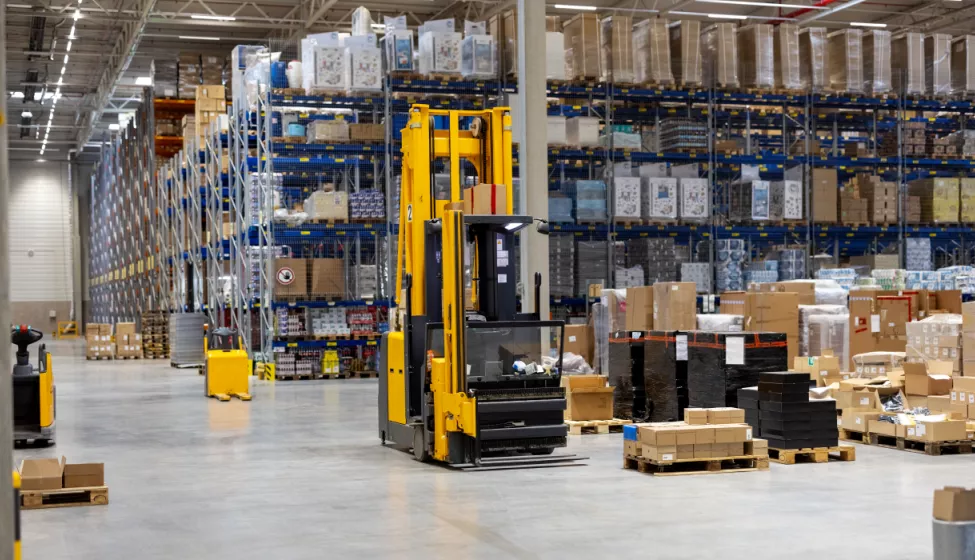August 12, 2021
Mitigating manufacturing & supply chain risk in the post-COVID era
By shutting down the global economy, the COVID-19 pandemic revealed the weakest links in the global supply chain. Almost overnight, the business landscape changed fundamentally: The World Bank estimates that the global economy shrank by around 4.3% in 2020 due to COVID, a decline rivaled only by the Great Depression and the two world wars.
Not only has the pandemic decimated many businesses, but the way we do business has changed permanently. How many more businesses will fail because they aren't adequately prepared for change? Pre-COVID, manufacturers and suppliers focused on optimizing supply chains in terms of efficiency and commercial best outcomes. In the post-pandemic world, more than ever before, stakeholders will also need to factor resilience and adaptability into their supply chains and manufacturing processes.
What won't change in the post-COVID era is customer demand for the highest-quality, lowest-cost products delivered on time, every time.
To stay competitive, the challenge for companies will be to make their manufacturing processes and supply chains more resilient by identifying and mitigating risks of all kinds.
The weakest links
COVID not only disrupted supply chains but also created new manufacturing challenges. Temporary trade restrictions and travel lockdowns resulted in major business and operational turmoil, making it difficult for some manufacturers and suppliers to fulfill contractual obligations, transport products, get supplies, etc.
Many manufacturers who depended on a single supplier for their critical components — or a supplier who produced an item in only one plant or country — were even more vulnerable. Many lost their longtime suppliers, and most had a hard time finding, revalidating, or qualifying an equivalently experienced supplier to provide the same volume and quality of supplies in the same timeframe.
In response, manufacturers and other stakeholders scrambled to mitigate risk by diversifying their supply base through new strategies like producing the majority of their key goods in the region where they are consumed, relocating production to a different region, reducing or eliminating dependence on sources considered risky, and using dual or multiple suppliers in various locations.
Dual sourcing allows companies to reduce the risk of supply blockages due to natural disasters, strikes, and other disruptions while allowing a company to scale production and prevent monopolies from forming that can increase supply prices. As a result, companies have developed leaner, more diversified supplier sourcing strategies and have come to rely more heavily on automated and remote technologies and techniques to monitor quality.
However, these coping strategies can introduce new problems. For instance, relocating production entails finding a new labor force of skilled workers and adapting to new supply chain and production logistics. Switching suppliers can introduce other risks, especially if the new supplier is unfamiliar with the product and manufacturing process. In addition, the process of identifying a supplier has changed in our post-COVID world.
Manufacturers can no longer assume that similar pricing in sourcing new suppliers will result in supplies of the same quality they were able to obtain pre-COVID. Consequently, dual or multiple sourcing can introduce the possibility of inconsistent quality between suppliers and can be more challenging to manage from a supply and planning perspective.
Understanding risk to build resilience
COVID provided a unique opportunity for manufacturers to see how their various systems and processes responded under duress while highlighting the importance of being prepared by assessing risks. Risk assessments provide an opportunity to analyze supply networks from a new perspective, identify vulnerabilities, and take action to improve robustness.
For example, supply chain risk assessments can help clients identify the gaps between their current and potential suppliers and determine what costs and risks might be involved in onboarding a new supplier. With this information, clients can decide whether they want to improve their incoming quality checks for products that may have quality issues or whether they want to invest in helping familiarize a new supplier with their products and processes by developing an Individualized Quality Control Plan (IQCP) to improve and narrow supply gaps.
In our post-COVID world, assessing risks can help manufacturing stakeholders prepare for trade wars, public health crises, global political shifts, strikes, and social unrest, as well as extreme weather events due to climate change, such as fires, floods, and tsunamis.
By identifying manufacturing risks and creating contingency strategies, companies can make necessary changes to mitigate against future disruptions while consistently providing the highest quality, most cost-efficient product. While risk assessments require an investment, the cost is minimal when compared to the cost of losing business due to foreseeable and unforeseeable crises.
In the future, the digitization of supply chains coupled with risk assessments promises to improve management upstream and downstream, creating more sustainable manufacturing operations in the years to come.
How Exponent Can Help
With a depth of experience in every facet of the manufacturing process, Exponent's multi-disciplinary risk assessment team in Asia is uniquely positioned to help optimize operations while minimizing risk. We help clients transition to new suppliers by solving technical problems and product quality issues. With offices around the world, our mobile technical team can provide global support for manufacturing activities in all industries. Through our onsite manufacturing audits, we can ensure that equipment is operating as designed and identify potential failure mechanisms to create a more resilient supply chain.
By developing a framework and action items to identify and reduce risk, we apply our extensive experience in auditing manufacturers to solve unforeseen problems, using tools such as process failure modes and effects analysis (PFMEA). Drawing on our extensive experience in failure analysis, we can also identify hidden risks and potential problem areas.
Insights

